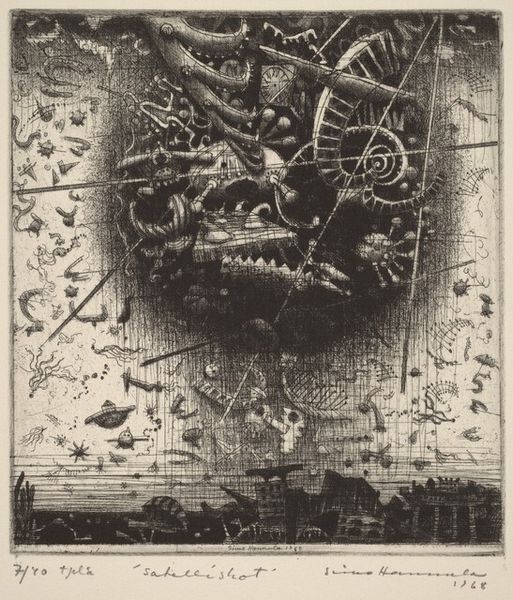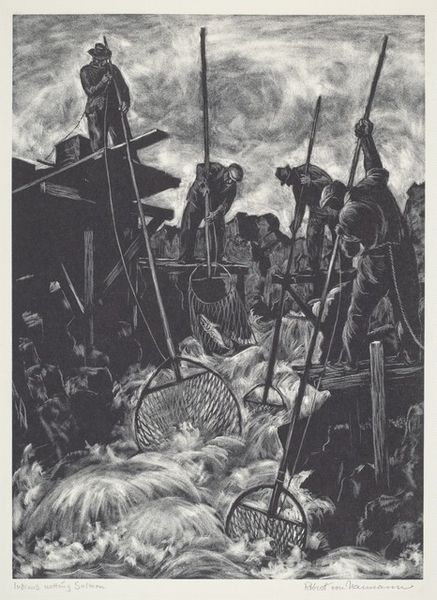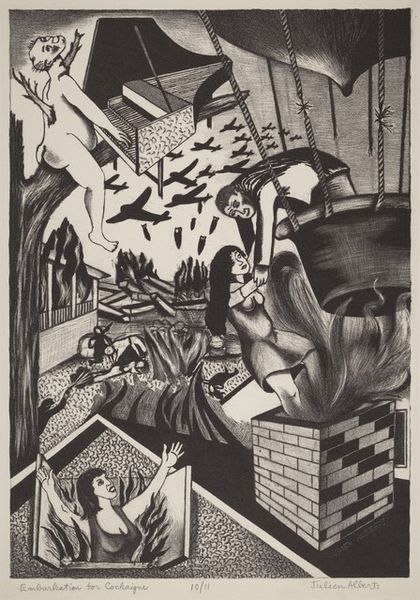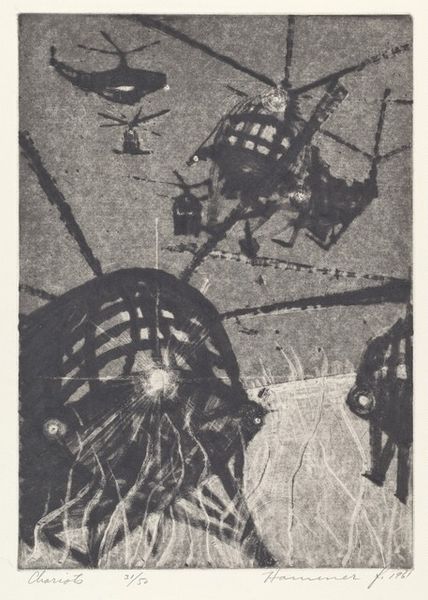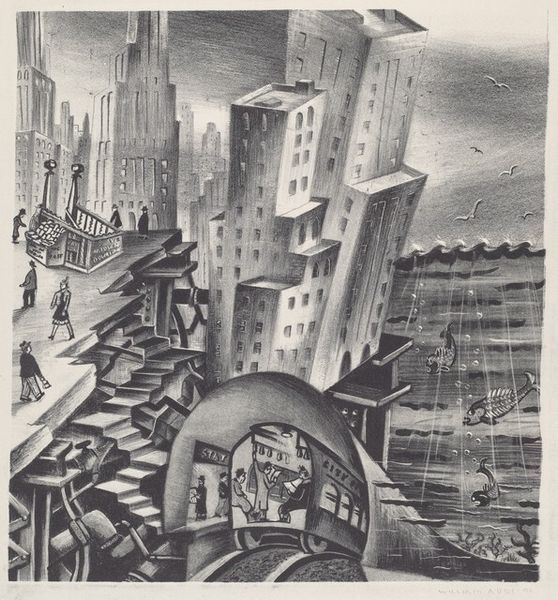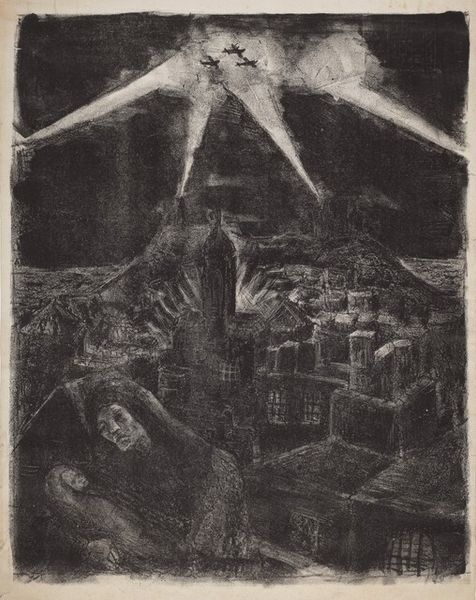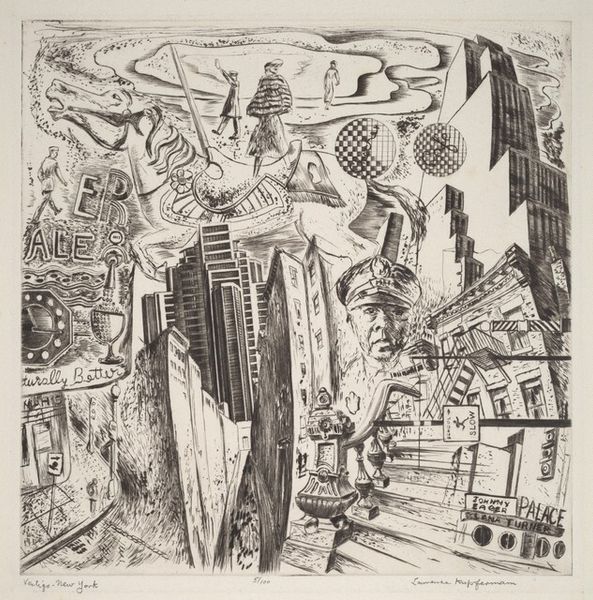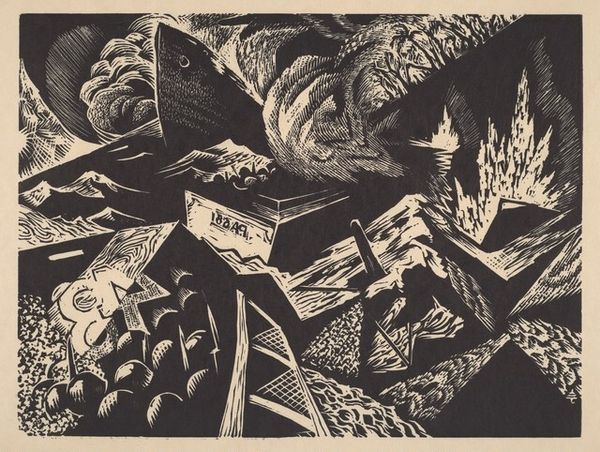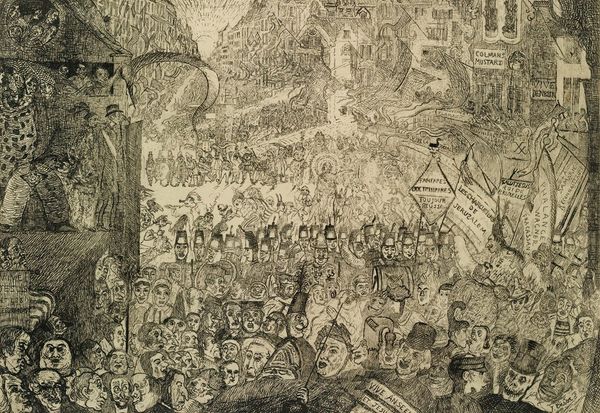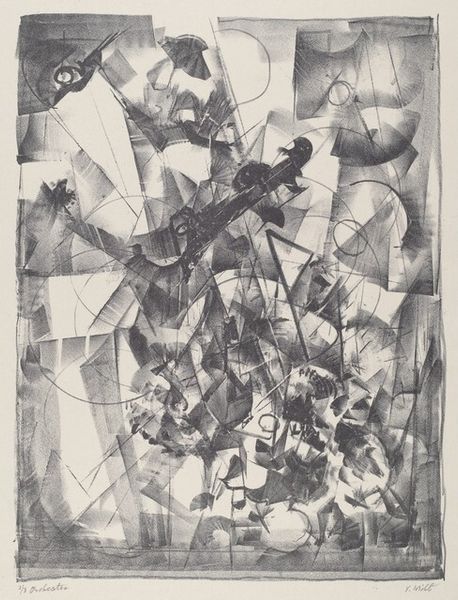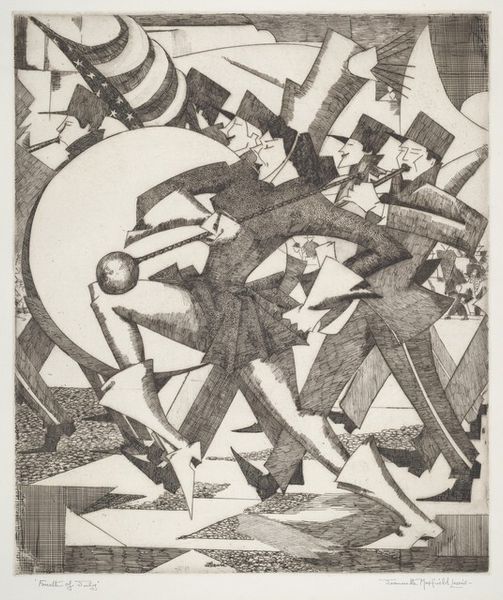
graphic-art, print, etching
#
graphic-art
# print
#
etching
#
abstraction
#
line
#
modernism
Copyright: National Gallery of Art: CC0 1.0
Curator: This print is titled "When the Time Comes" by Simo Pertii Hannula, created in 1968. It’s an etching, a graphic art form offering incredible detail. Editor: Chaotic is my first impression. It looks almost apocalyptic. An overwhelming sense of fragments, and almost painful to look at given how busy the linework is. Curator: I can see that. But the chaos, as you call it, reads to me like a collapse of established forms. Given its date, 1968, there's a potent commentary embedded in this collapse: existing orders being questioned and upturned. The symbols of a fading era swirling around us. Editor: You are right to highlight the year. I do think it could be connected to the wider socio-political landscape, the cultural upheaval across Europe, especially in France. Was Hannula reflecting that sense of unease through this shattered reality? Curator: I believe so. The title itself, "When the Time Comes", is foreboding. Perhaps he's pointing towards an unavoidable reckoning, where old constructs simply give way. Note the deliberate lack of a clear focal point. The eye is constantly directed into multiple, colliding narratives, a symbolic representation of social fragmentation. Editor: True. The linear detail contributes to that. It’s like a record of fracturing, each line representing a lost connection, a broken ideal. But there is something cathartic in destruction; it clears the ground for something new. It has an inherent ambiguity about whether what’s next might be better. Curator: Precisely! This sense of ambiguity is what makes the work resonate beyond its historical moment. The iconography feels less fixed than fluid, a symbolic expression that shifts according to the viewer and era, an unending cycle of entropy and potential renewal. It can echo different contexts, making it feel very present even now. Editor: That is thought-provoking. Hannula's work leaves you contemplating the ephemerality of structures. It seems the print succeeds in immortalizing a sentiment of constant transformation and tension, relevant then, still felt today. Curator: An era captured. It feels like "When the Time Comes," is not just about an inevitable end, but also about what can rise from those ruins.
Comments
No comments
Be the first to comment and join the conversation on the ultimate creative platform.
